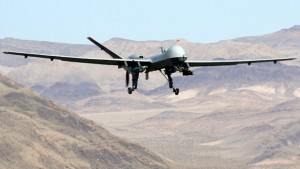It has been written that it is difficult to become sentimental about . . . the new type of seaman—the man of the engine and boiler rooms. This idea is born of the belief that he deals with material things and takes no part in the glorious possibilities of war or in the victories that are won from storms. This theory is absolutely false . . . for there is music as well as the embodiment of power about the mechanisms that drive the great ships of today.
—Capt Frank Bennett, USN
The Steam Navy of the United States, 1897

From our flyboy friends in the U.S. Air Force comes the article “The Swarm, the Cloud, and the Importance of Getting There First” in the July/Aug issue of the Air & Space Power Journal (including the lead-in excerpt). In it, friend-of-CIMSEC Maj David Blair and his partner Capt Nick Helms, both manned-aircraft and drone pilots, address their vision for the future of the aviation warfare concept of operations and the cultural sea changes that must take place to accommodate it. Needless to say, such a vision is also relevant to the future of naval aviation. So if you’ve got some beach-reading time ahead of you, dig in. The link above includes the full article:
This article advocates an aviation future of manned–remotely piloted synergy in which automation amplifies rather than replaces the role of aviators in aviation. In this vision, aviators are judged solely by their effects on the battlefield. Amidst this new standard of decentralized execution is the “swarm,” a flock of highly sophisticated unmanned combat aerial vehicles that serve as “loyal wingmen” for manned strike aircraft. Here, every striker is a formation flexibly primed to concentrate effects at the most decisive times and locations. This future also includes the “cloud,” a mass of persistent remotely piloted aircraft (RPA) that provide vertical dominance through wholesale fire support from airspace cleared by the swarm. Fusion amplifies the human capacity for judgment by delegating routine tasks to automation and “demanding” versatile effects in response to fog and friction rather than “commanding” inputs.
The challenge is not technological but cultural. To realize this future, we first must accept remote aviation as a legitimate part of the Air Force story, and then we must look to deep streams of airpower thought in order to understand it. First, Gen Henry “Hap” Arnold teaches us air-mindedness—to fully leverage a technology, we must develop both humans and hardware. Second, Gen Elwood Quesada describes an aviator’s relationship with technology—the discussion is never “human versus machine”; rather, it concerns the relationship between humans and machines. Instead of a cybernetic view in which automation reduces the role of humans in the world, we argue for a capabilities-based perspective that uses automation to empower aviators to better control the battlespace. Third, Col John Boyd reminds us that identities are always in flux in response to changing technical possibilities.
Thus, the F-22 and the RPA are more akin than we realize since both embrace the power of advanced processors and networked data links. An Airman’s view of RPA futures enables manned–remotely piloted fusion, and both traditional and remote aviators must build that future together as equals. The friendly lives saved and enemy lives taken by RPAs in the air campaigns of the last decade merit this acceptance.
Dave also recommends the article “Why Drones Work: The Case for Washington’s Weapon of Choice” by Daniel Byman.

One piece not discussed is the inherent limitations on drones. They currently aren’t as all-weather as we would like, and the satellite link is a delay that a local human operator won’t necessarily have. The future is likely a mix of manned and unmanned, however, we have too many people arguing extremes: for all drones and no manned aircraft in some areas, such as ISR (the replacement for the Navy’s EP-3 is all drones), or a culture of drone rejection (such as for fighter aircraft).